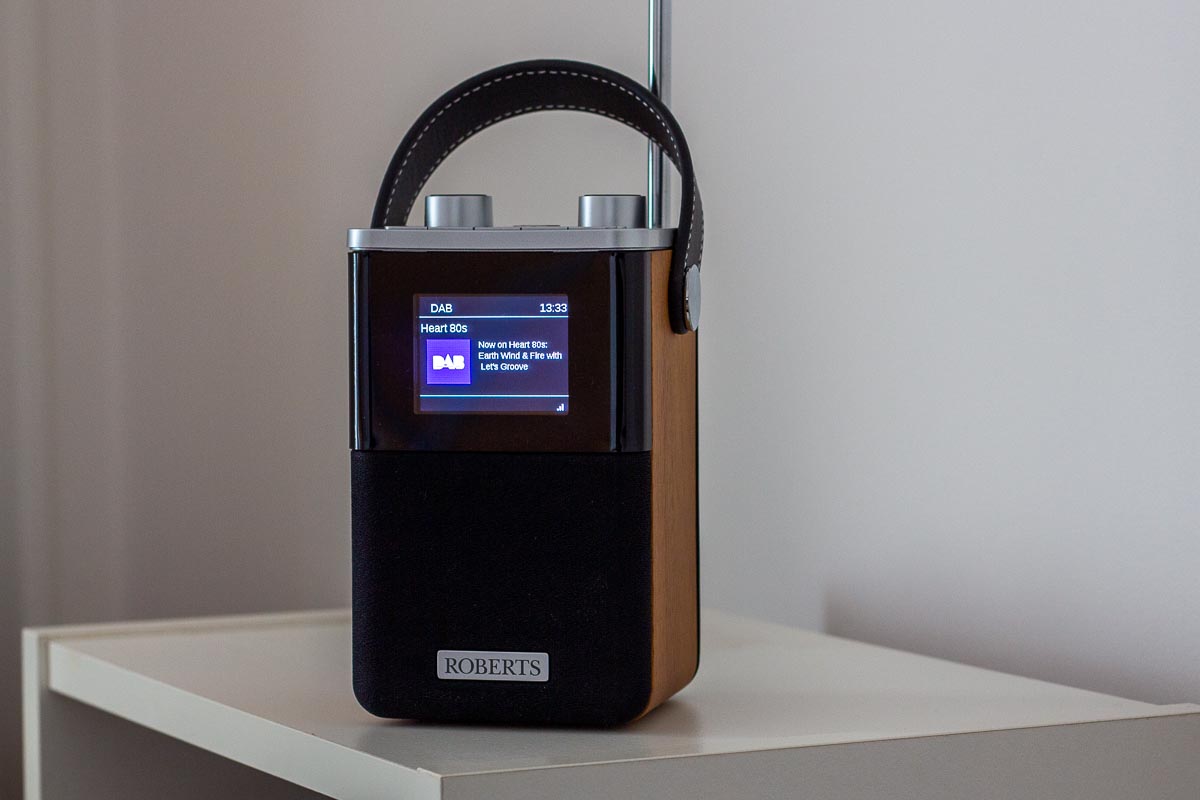The Roberts Blutune T2 packs DAB/DAB+ and FM radio, Bluetooth, aux-in and a USB socket into a pretty small package. The carry handle and choice of battery or mains power means it’s easy to take from room to room. With two alarms it could even be used as a clock radio.
In our review we’ll look at the radio’s five modes, see how easy it is to use and find out how it sounds.
Features and setting up the Roberts Blutune T2
When the radio is switched on for the first time it enters the DAB mode and scans for stations. In our location the Blutune T2 found all the available digital stations. Reception of FM stations was also normal for a portable radio. The first time the Bluetooth mode is selected the radio shows that it is discoverable by other devices. Connecting an Android smartphone was quick and easy.
The radio comes with an AC power adapter which has a good length lead. A slot on the rear of the radio takes four AA (LR6) size batteries.
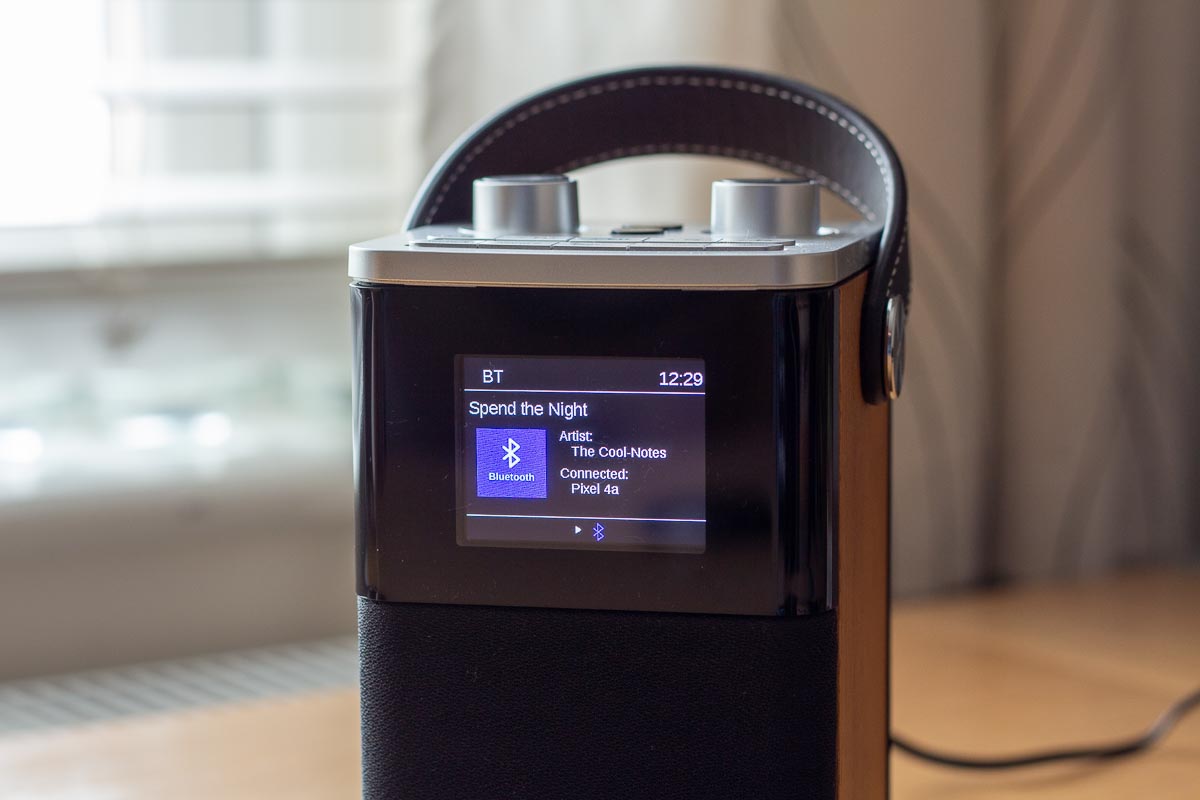
As well as standard alkaline batteries the radio can take and charge rechargeable NiMH batteries. A switch inside the battery slot toggles between these modes. The battery level and charging state are shown with an icon on the display. This is a very useful feature and will save having to put the batteries into a separate charger. It also avoids the need for a proprietary battery pack which could be expensive or be discontinued in future.
The included user guide is comprehensive and easy to follow. Some brands have ‘quick start guides’ or tiny instructions and it’s good to see Roberts continuing to provide helpful manuals. A two year guarantee is provided. Replacement power adapters can be bought online.
Roberts have released a few new radios recently and Bluetooth connectivity is often now included. One model is the large Blutune 300 sound system with similar styling to the Blutune T2.
Sound quality
The radio has a single speaker. The sound is a step up compared to many portable DAB radios under £100. This is particularly the case when it comes to bass which shallow radios often struggle with. The volume is sufficient for small rooms like kitchens. For background music and any speech the radio performs well.
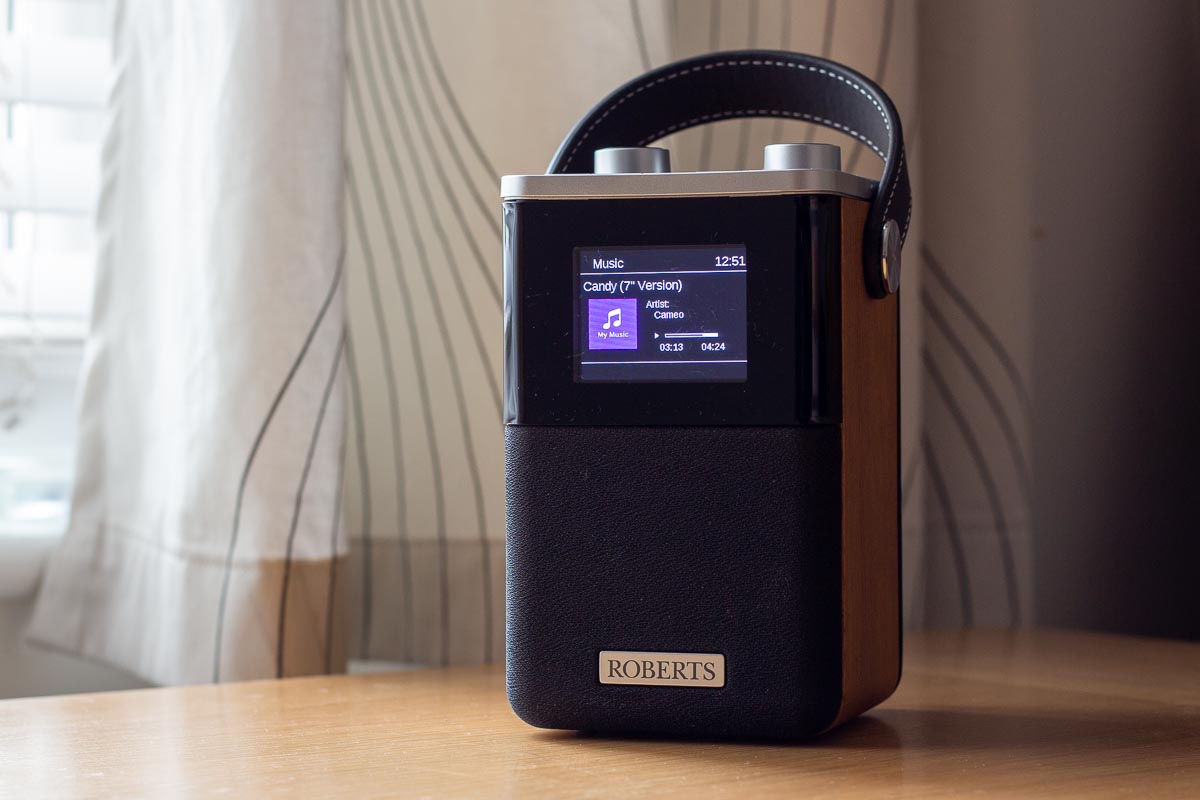
For more spirited listening or when the music is the main focus it’s not quite as good as something like a similarly priced standalone speaker. The bass on songs like Golden Brown by The Strangers has some presence but the other instruments seem less distinct. When listening to Even Flow by Pearl Jam the vocals come across fairly well but drum sounds like cymbals sound slightly flat.
If you intend to make good use of Bluetooth for music streaming and podcasts it might be worth looking at a Bluetooth speaker instead. Needing to use a smartphone for short bursts of radio listening might be a pain, but a good Bluetooth speaker for about £100 might sound better for streaming music.
Roberts doesn’t list the speaker size or the audio power output in the specifications. There aren’t any customisable equaliser or treble and bass settings.
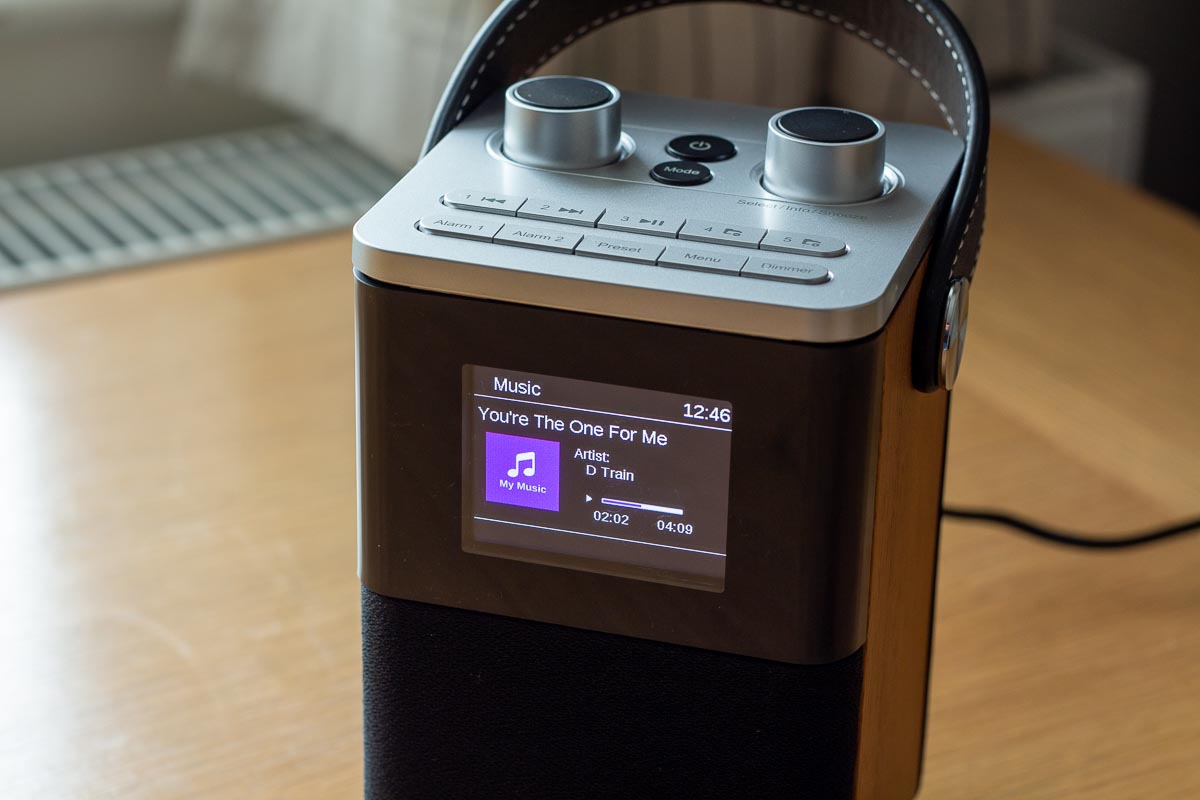
Output from the headphone socket on the back of the radio sounds OK. Stereo separation is better than some other radios we’ve heard but the sound could be crisper. Music can be bass-heavy at times but speech and talk radio sound good.
An aux-in input is included on the rear of the radio. This is useful if you have lots of music on a device without Bluetooth, such as an older iPod or MP3 player.
User interface
The user interface is clear and well organised. All of the buttons are on the top of the radio which means it won’t move around when changing the station or using the menus. Dedicated knobs are provided for the volume and tuning, with power and mode buttons between them. This gives the simplest and most direct access to changing the station, volume or source – e.g. from DAB to Bluetooth.
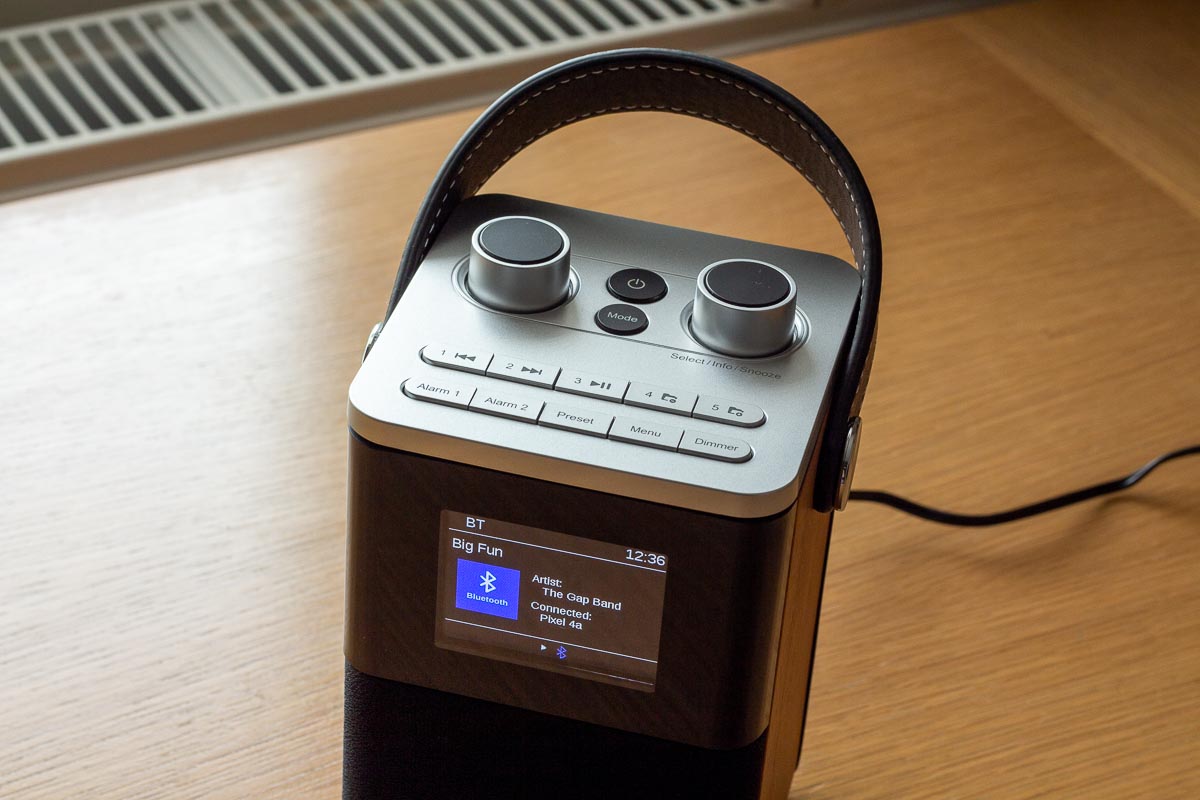
Five smaller buttons provide direct access to presets in the radio modes and playback controls in other modes. A further five buttons control the alarms, access a list of presets, the menu and dimmer options. Again, this all works well and the display is quick to update. The menus and information on the colour display will be familiar to anyone who has used some of Roberts’ other radios.
A small criticism could be made about the size of the text on the colour display. On a windowsill or kitchen worktop the display works well, but on a side table or bedside it could be more difficult to read. Other models in the Roberts range, like the Rambler BT, have a much larger starburst display with less information.
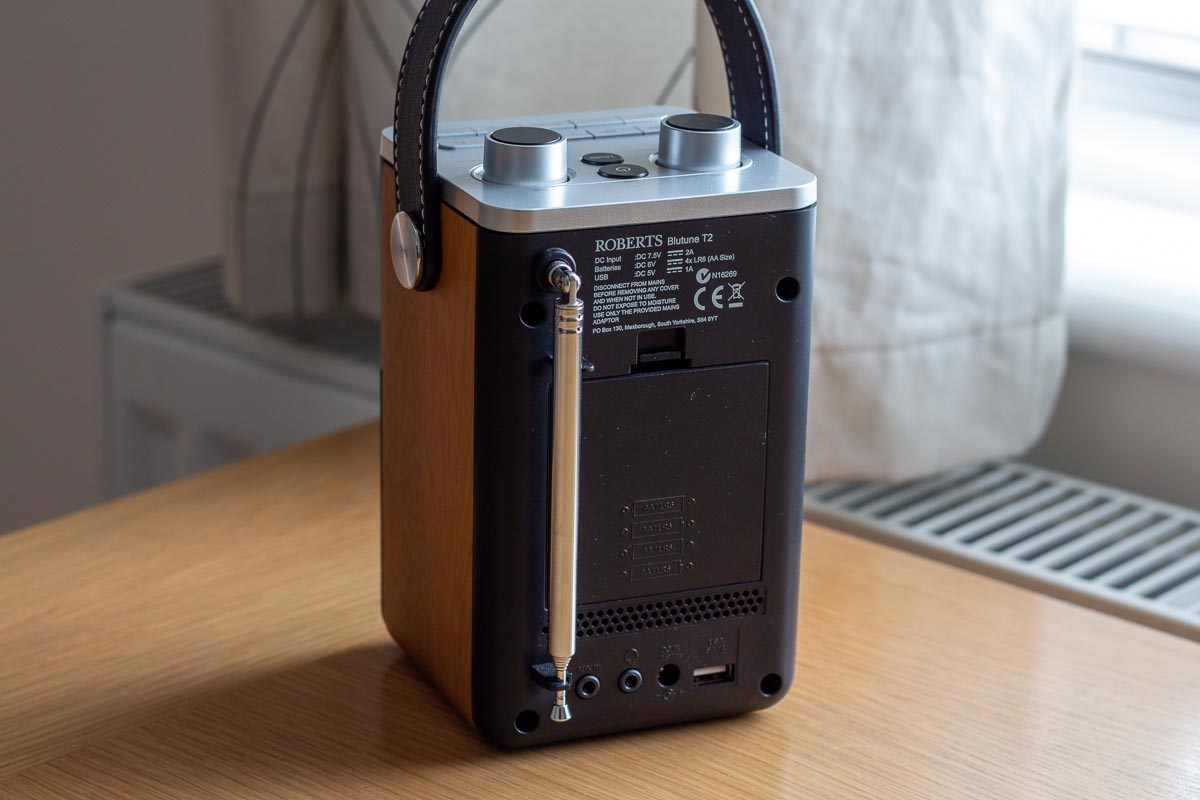
Batteries are easy to install but particular care must be paid to the switch in the battery compartment. It toggles between the ‘CHARGE NiMH’ and ‘Alkaline’ options. The manual dedicates more than three pages to batteries with a few important warnings. It’s well worth following these instructions, although it’s very good to have the option to use standard AA rechargeable batteries. We inserted some Energizer batteries which the radio duly charged on mains power. The specifications say that the batteries should last for up to 25 hours depending on the mode, volume and display brightness.
All of the modes work well. The option to insert a USB stick with AAC, FLAC, MP3 or WAV music files for those times when you don’t fancy radio or podcasts is nice to have.
Verdict on the Roberts Blutune T2
The Roberts Blutune T2 is a good all-round radio for around £120. The range of inputs makes it a very versatile device which is ideal for radio, music and podcast listening. If you intend to listen to lots of music it might be better to choose a speaker or a bigger radio.
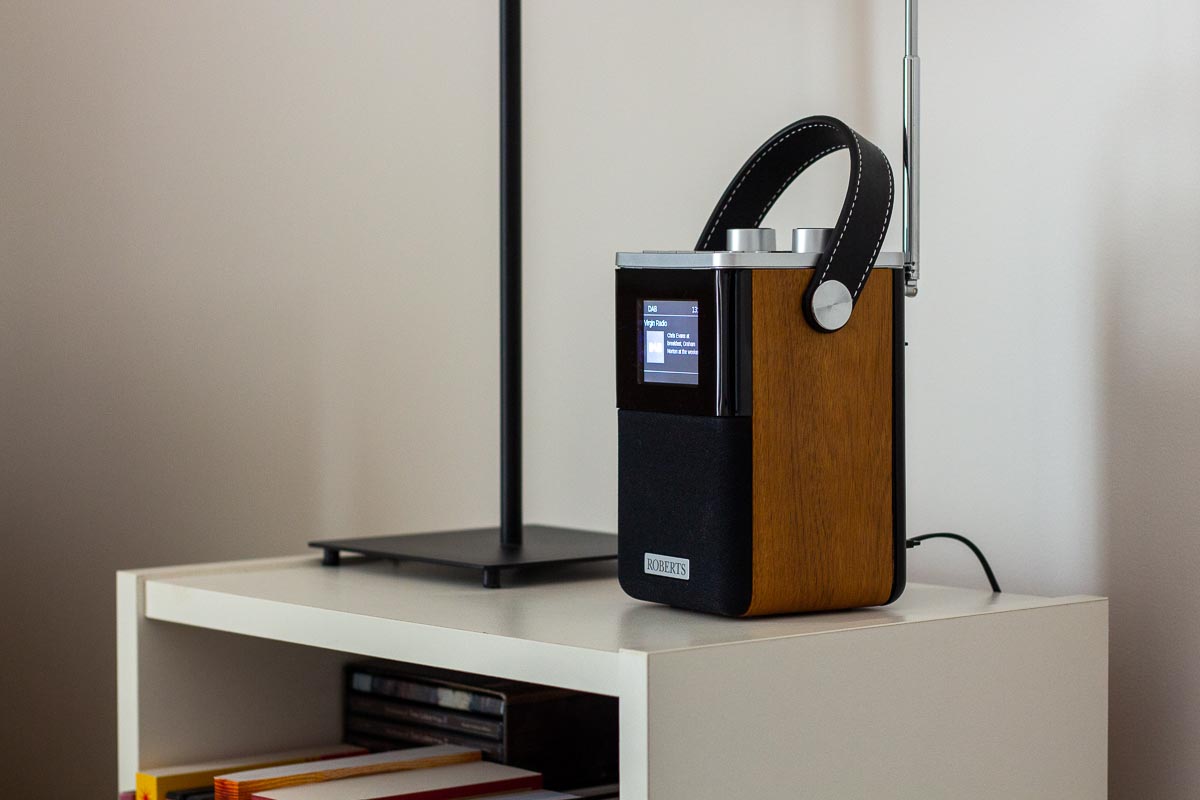
Having the option of using rechargeable AA batteries is very good. Build quality is good and the design is very smart. In the standby mode a nice touch is the analogue clock that’s shown on the display.
The Roberts Radio Stream 94i or Stream 94L has many of the same features plus Internet radio for around £200. There’s also the Roberts Beacon 310 Bluetooth speaker which is available for £99 and a few models from Bose to consider.
